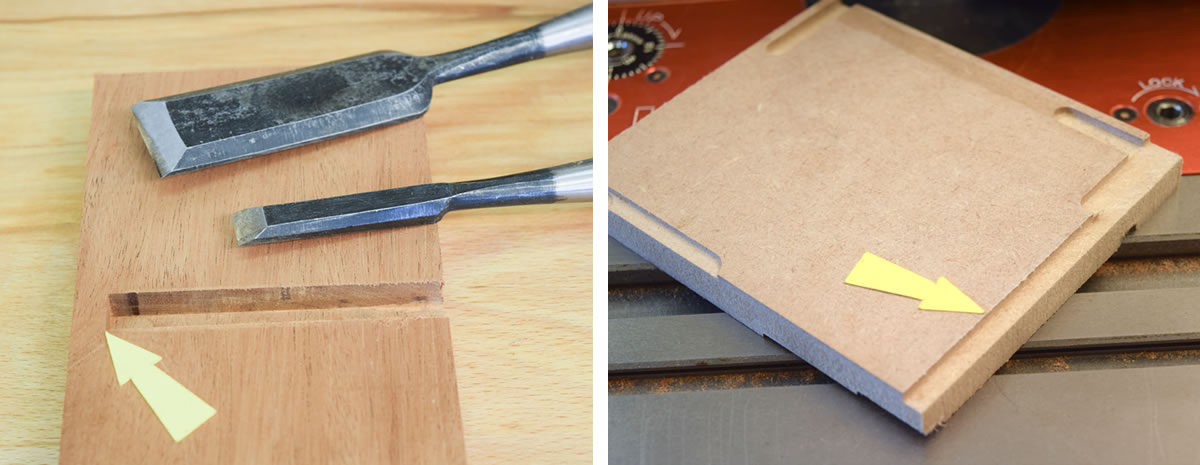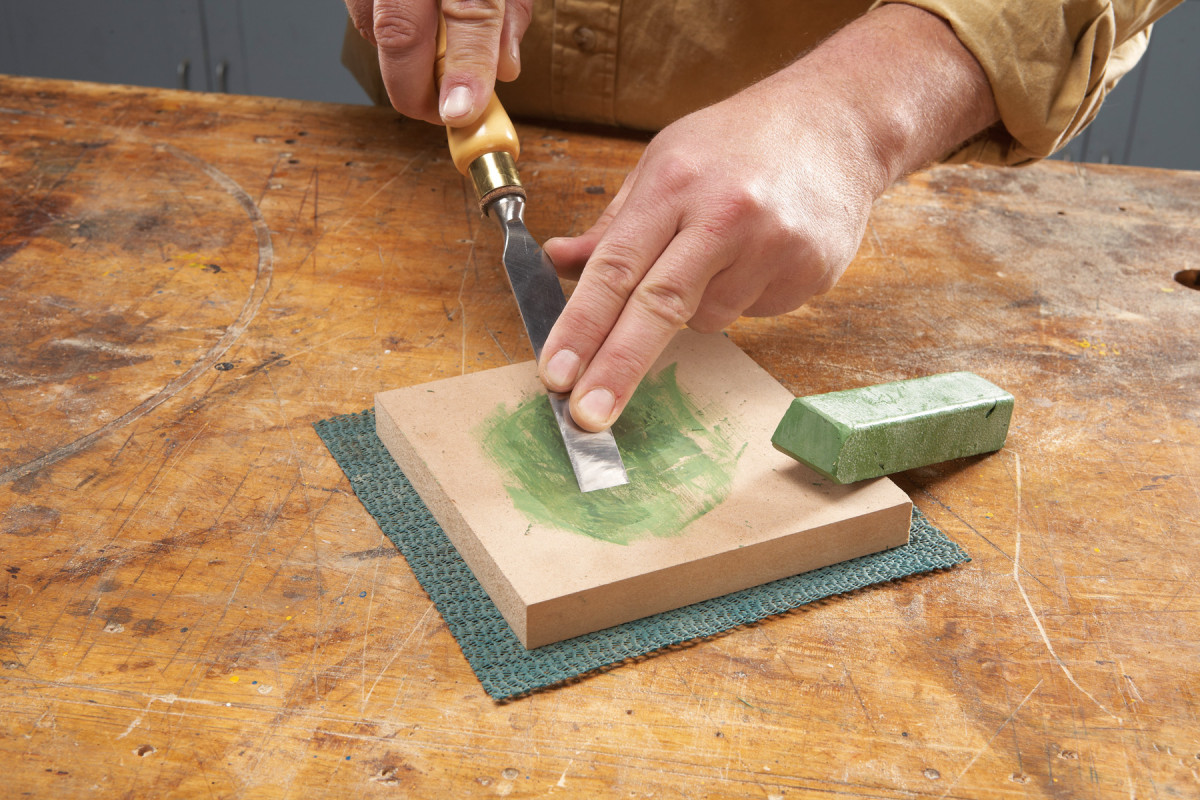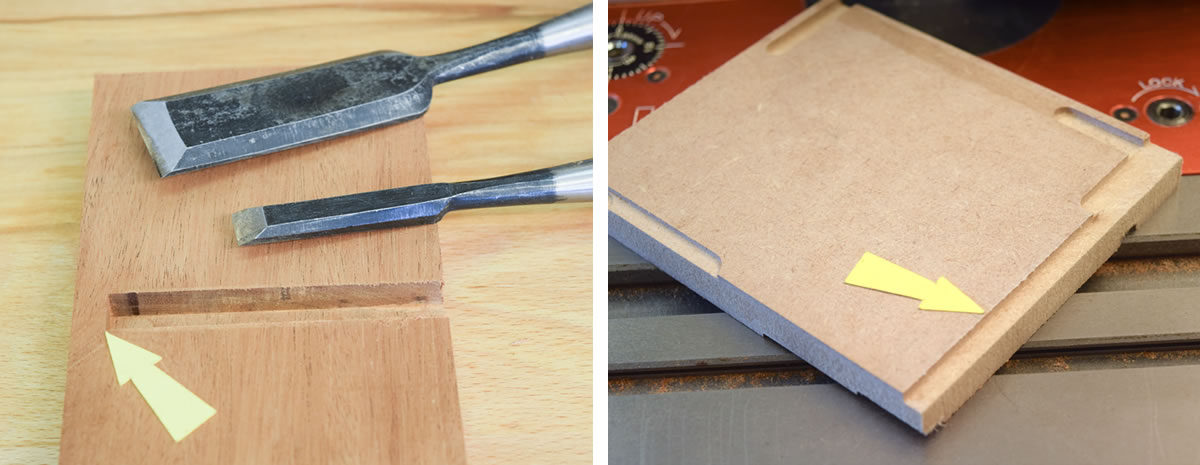Do you ever wonder if you can use a chisel on MDF? Well, you’ve come to the right place! In this article, we’ll dig into the details of working with MDF and whether a chisel is a suitable tool for the job. So, let’s roll up our sleeves and get ready to explore the world of chisels and MDF!
Now, when it comes to MDF, it’s important to know what you’re dealing with. MDF, short for Medium Density Fiberboard, is a versatile and popular material used in woodworking projects. It’s made by combining wood fibers with resins and then subjecting them to high pressure and heat. This process creates a smooth and dense board that’s easy to work with and has a wide range of applications.
So, can you use a chisel on MDF? Well, the answer is yes – with a few considerations. While MDF is generally a bit different to work with compared to solid wood, a chisel can still be used effectively. In fact, a sharp chisel can be great for creating clean cuts, shaping edges, and even adding decorative details. Just keep in mind that MDF is more prone to chipping and splintering, so it’s essential to be cautious and take your time when chiseling.

Can You Use a Chisel on MDF? – A Comprehensive Guide
Introduction:
Medium-density fiberboard (MDF) is a popular choice for DIY projects and furniture-making due to its affordability and versatility. However, working with MDF requires the use of appropriate tools and techniques. One common question among DIY enthusiasts is whether a chisel can be used on MDF. In this article, we will explore this question in detail, understanding the properties of MDF, the limitations of using a chisel, and alternative methods for shaping MDF.
Understanding MDF and Its Properties
MDF is an engineered wood product made from compressed wood fibers, resin, and adhesive. It is known for its uniform density, smooth surface, and lack of knots or grain patterns. These characteristics make MDF an ideal material for painting, veneering, and other decorative finishes. However, when it comes to working with chisels, there are a few key considerations to keep in mind.
Firstly, MDF has a relatively low density compared to solid wood. This means that it is more prone to chipping, splintering, and compressing when using a chisel. Additionally, the glue used to bind MDF fibers can dull the cutting edge of a chisel more quickly than solid wood. Therefore, it is important to use a sharp chisel and maintain its cutting edge throughout the process.
Secondly, MDF does not have the structural integrity of solid wood. Chiseling too aggressively or removing too much material at once can weaken the MDF and may result in breakage or instability. Therefore, it is crucial to approach chiseling on MDF with caution and to plan the cuts to avoid compromising its strength.
Despite these considerations, it is possible to use a chisel on MDF with proper technique and care. Keep reading to learn more about the best practices for chiseling MDF.
Best Practices for Chiseling MDF
1. Choose the right chisel: When working with MDF, it is recommended to use a sharp and high-quality chisel specifically designed for working with composite materials. These chisels often have a carbide edge or a specialized coating to withstand the abrasive nature of MDF.
2. Mark your cuts: Before starting to chisel, use a pencil or a marking knife to clearly mark the areas where material needs to be removed. This will help guide your chisel and ensure accuracy.
3. Take it slow: When chiseling MDF, it is essential to take your time and work slowly. Applying too much force or rushing the process can lead to chipping or breaking. Instead, make multiple shallow cuts, gradually removing thin layers of material.
4. Use a mallet or hammer: To prevent hand fatigue and achieve more controlled cuts, consider using a mallet or a hammer to tap the chisel gently. This distributes the force evenly and reduces the risk of accidental slips or injuries.
5. Support the MDF: To minimize the risk of tear-out or splintering on the opposite side of the chiseled area, place a sacrificial board or backing behind the MDF. This provides support and prevents the fibers from tearing out when the chisel exits the material.
6. Sand and seal the edges: After chiseling, it is important to sand the edges to smooth out any roughness or imperfections. Additionally, sealing the edges with a primer or edge banding can help protect the MDF from moisture and further damage.
It is worth noting that while chiseling can be done on MDF, there are alternative methods that may yield better results. Let’s explore some of these methods in the following sections.
Alternative Methods for Shaping MDF
Router:
Using a router with appropriate bits is a common and efficient method for shaping MDF. Routers allow for precise and controlled cuts, enabling you to create intricate designs and details. Whether it’s creating recesses, profiles, or decorative edges, a router can be a versatile tool for working with MDF.
Jigsaw:
For curved or irregular cuts, a jigsaw can be a valuable tool. By using a fine-toothed blade designed for cutting wood, you can achieve smooth and clean curves in MDF. Just like with chiseling, it is important to work slowly and steadily to prevent tear-out or splintering.
Table saw:
When working with larger pieces or needing precise straight cuts, a table saw can be a suitable option. With proper setup and the right blade, a table saw can make quick work of cutting MDF to size or creating joinery.
In conclusion, while it is possible to use a chisel on MDF, doing so requires careful consideration and technique. Chiseling MDF can be challenging due to its relatively low density and potential for chipping or breaking. However, with the right tools, proper techniques, and patience, it is possible to achieve satisfactory results. Alternatively, using tools such as routers, jigsaws, or table saws can offer more precise and efficient methods for shaping MDF. Ultimately, the choice of method depends on the specific project requirements and personal skill level. Remember to always prioritize safety and take the necessary precautions when working with any tools or materials.
Key Takeaways: Can You Use a Chisel on MDF?
- Chisels can be used on MDF, but there are certain considerations.
- MDF is a manufactured wood product that is softer than solid wood.
- Using a chisel on MDF requires a sharp and properly honed chisel.
- Be cautious of tear-out, as MDF can chip or splinter easily.
- Take care not to apply excessive pressure to prevent damage to the MDF.
Frequently Asked Questions
Here are some commonly asked questions about using a chisel on MDF.
1. How can I use a chisel on MDF without damaging it?
When working with MDF, it’s important to use a sharp chisel and take small, controlled cuts. Start by scoring the surface with a utility knife to prevent splintering. Then, position the chisel at a slight angle and tap it gently with a mallet to create a shallow cut. Gradually deepen the cut by repeating the process, gradually increasing the force until you reach the desired depth. By applying even pressure and using sharp tools, you can minimize the risk of damaging the MDF.
2. Are there any limitations to using a chisel on MDF?
While chisels can be used on MDF, there are a few limitations to keep in mind. MDF is a composite material made of wood fibers and resin, which means it is not as durable as solid wood. It can be prone to chipping and splintering, especially along the edges. Additionally, MDF is more sensitive to moisture, so it’s important to avoid exposing it to water or high humidity, as it can cause swelling and warping. It’s also worth noting that MDF has a uniform consistency, so intricate detailing or fine carving may be more challenging with this material.
3. Can I use a chisel to make detailed cuts or intricate designs on MDF?
While MDF can be carved and shaped using a chisel, it may not be the best choice for intricate designs or detailed cuts. MDF has a dense and uniform composition, making it more difficult to achieve fine details compared to natural wood. However, with patience and the right technique, you can still achieve some level of detailing with a chisel. Consider using smaller-sized chisels, such as a fishtail or gouge, which can provide more control when making precise cuts on the MDF surface.
4. Should I use a specific type of chisel for working with MDF?
When working with MDF, it’s recommended to use a chisel with a beveled edge. This type of chisel is designed to make clean cuts and reduce the risk of splintering. Look for a chisel with a sharp and durable blade, preferably made from high-quality hardened steel. It’s also a good idea to have chisels in different sizes to accommodate various cutting requirements. Remember to keep your chisels sharp by regularly honing and sharpening them, as dull blades can increase the risk of damaging the MDF surface.
5. Are there any safety precautions I should take when using a chisel on MDF?
Yes, it’s essential to follow safety precautions when using a chisel on MDF. Wear safety goggles to protect your eyes from flying debris, and consider using a dust mask to avoid inhaling MDF particles. It’s also a good practice to secure the MDF piece firmly in a vise or clamp before working on it to prevent any movement. Take your time and work slowly to maintain control over the chisel, reducing the risk of slips or accidents. Lastly, always use the chisel with care and be mindful of your hand placement to prevent any potential injuries.

What can you do with a chisel?
Summary
So, can you use a chisel on MDF? The answer is yes! MDF is a versatile material that can be easily shaped and carved using a chisel. However, it’s important to take precautions and work slowly and carefully to prevent any damage to the MDF or injury to yourself. Always wear safety goggles and gloves, and make sure your chisel is sharp and well-maintained. By following these guidelines, you can achieve great results with a chisel on MDF.
In conclusion, while using a chisel on MDF is possible, it requires patience, skill, and proper safety measures. With the right tools and techniques, you can create beautiful designs and shapes on this versatile material. So, go ahead and give it a try, but remember to always prioritize safety throughout the process.
